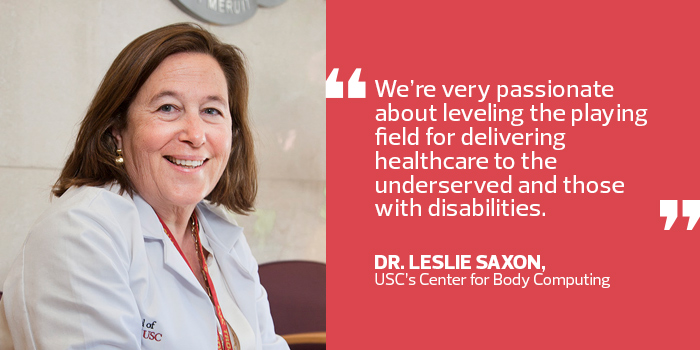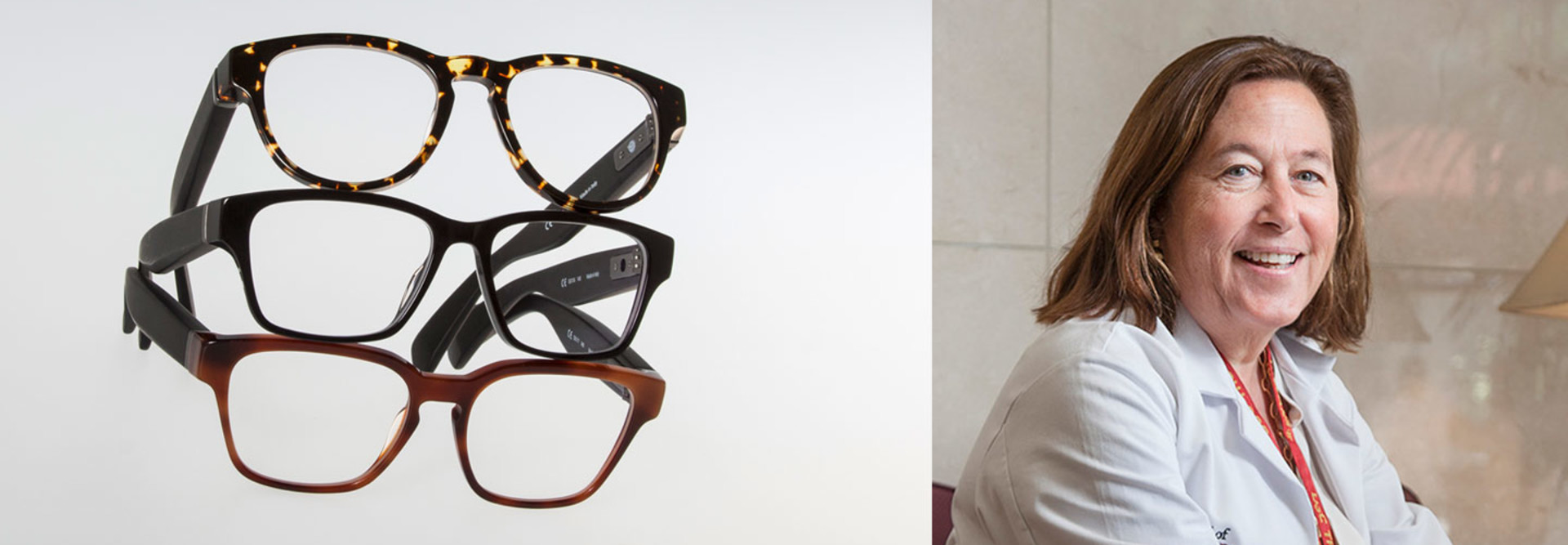Q&A: Dr. Leslie Saxon of USC's Center for Body Computing Marks Effective Health IT as High Priority
At the Center for Body Computing (CBC) — an innovation lab at the University of Southern California that provides resources and advice to organizations developing digital health tools — the goal remains the same as when its doors opened 11 years ago, says Dr. Leslie Saxon, the center’s executive director: leverage technology for better patient outcomes.
She spoke with HealthTech Managing Editor Dan Bowman about the CBC’s recent partnerships focusing on patient engagement, what’s in store for its Virtual Care Clinic and how it’s working to improve technology for people with disabilities.
HEALTHTECH: Patients who access the Virtual Care Clinic discuss their issues with an avatar of their clinician. How does that work?
Saxon: The virtual doctor has voice recognition and is powered by artificial intelligence, so it can answer a lot of different and complex questions, unlike say, if you made a video. It can be updated very easily and delivers everything in a very consistent manner. It also allows a person to talk for a long time without pressure; it’s not subject to judgment.
Our plan is to create a number of these virtual doctors by translating our own experts and then extending them out. They theoretically can reach any patient who has a question, at any time, anywhere. It’s a very good way to market your brand and get your experts out there. Patients who have certain conditions want advice and guidance from experts in those conditions. This breaks down those barriers. We’re studying how people consume that information and use it, and will enhance our virtual doctors accordingly.
HEALTHTECH: What other benefits have you discovered?
Saxon: Patients want to be able to talk to a clinician when they’re ready. That doesn’t always happen in the environment of a single visit.
From a workflow perspective, a lot of what my virtual doctor delivers is information that I deliver every day, multiple times. If I can spend my time doing those things that only I can do and let my virtual doctor deliver information to patients consistently, there’s more efficiency in that.
Education is key. Many people don’t receive good content individualized to their specific needs. Instead, they read Google search information about their condition. The virtual doctor helps to provide information and allows patients to feel like they are more in control of their situation. This is going to be a model that evolves over time.
 HEALTHTECH: Last summer you announced a partnership with vision care company VSP Global to pilot the use of health-tracking technology into the frame of its Level line of glasses. Can you provide an update on that collaboration?
HEALTHTECH: Last summer you announced a partnership with vision care company VSP Global to pilot the use of health-tracking technology into the frame of its Level line of glasses. Can you provide an update on that collaboration?
Saxon: We anticipate it providing solid preliminary data about what motivates people when sensors are built into objects you use every day. This will be the first time where we actually develop technology in a product that most people use in a more functional way. Your glasses — if you wear them of course — you wear all the time.
We’re working with VSP to help them continue to create a contextualized health platform based on that work. The glasses record measures like steps taken and calories burned. So far, the feedback we’ve received from people wearing the frames has been very good; engagement has been high.
HEALTHTECH: The CBC is also creating a strategic plan for the Special Hope Foundation around developing digital health tools for those with developmental disabilities. How is that effort progressing?
Saxon: A lot of tools in daily life, including many medical solutions, are not designed with acknowledgment that people using them might have disabilities. That should not happen in healthcare.
The partnership evolved from what we call “envisioneering session” discussions with the foundation. These discussions also included designers from companies including IBM and LinkedIn who specialize in product accessibility. In those sessions, we identify the needs of new partners and then work to customize engagement specifically to meet those needs.
This is an opportunity to ensure that digital hardware and software tools can meet those design specifications. We’re very passionate about leveling the playing field for delivering healthcare to the underserved and those with disabilities.
HEALTHTECH: What’s in store for the CBC in 2017?
Saxon: We’re looking at how digital health fits into the Internet of Things. We’re also working on cybersecurity and regulatory issues with private, state and federal entities.
We want to create unique tools and an understanding around medical data. It’s fun to work in a field with this much sophistication already in place.









